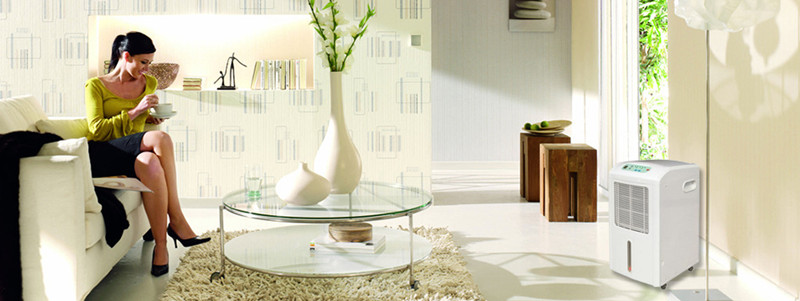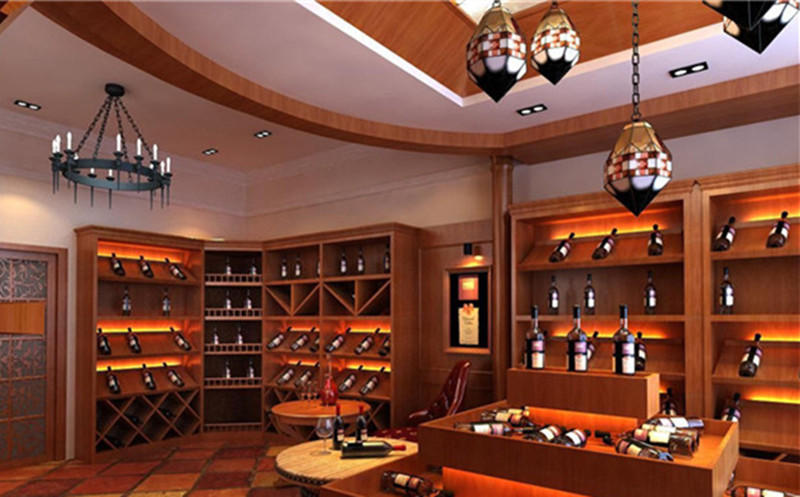


2018-08-13 Conloon 0
There’s no denying that a dehumidifier is a helpful way to improve your home’s air quality. These small but mighty appliances work by reducing the amount of moisture in the air, and if you’re familiar with allergens, you know that high-moisture environments are exceptionally hospitable to the growth of stubborn mold and mildew.
Additionally, a basement dehumidifier can effectively help ward off moisture-loving dust mites that can trigger the most uncomfortable allergy symptoms. These allergens may be the reason why you often have a stuffy nose, itchy eyes or experience regular sneezing.
But not all dehumidifiers are created equal, and some models are best-suited for basements than others. Achoo Allergy is on hand to help you choose the right basement dehumidifier, based on your unique needs, space and personal preferences. Use this handy, in-depth dehumidifier selection guide to ensure that you’re purchasing a model that will effectively remove the moisture from your basement. Regardless of which model or style you choose, you want to make sure that you’re keeping your basement at the ideal humidity range of 40 to 50 percent.

Consideration Number 1: Size of the Room
Generally speaking, basement dehumidifiers will be classified by coverage area in square feet. You will want to choose a dehumidifier with a coverage range that most closely aligns with your basement’s size. To determine the area of which you want to dehumidify, make sure to measure your entire area—including stairways, crawlspaces and closets—in square feet.
You can usually find a dehumidifier size that allows you to install a single model to cover your entire basement. With that being said, you can double- or triple-up on dehumidifiers if you prefer a smaller coverage area. In fact, we recommend adding a dehumidifier to each room to ensure maximum moisture absorption.
It is also important to note that some manufacturers use cubic feet rather than square feet to determine coverage area, but this isn’t universal. As a general rule, we recommend installing a 50- to 70-pint dehumidifier in each room of your basement. Rooms with lower levels of airflow may require a larger size or two dehumidifiers per room.
Consideration Number 2: Moisture Level
When choosing the appropriate basement dehumidifier, room size isn’t the only consideration when it comes to choosing capacity. If your space is moderately damp—i.e., there is a slight musty odor but minimal moisture on the floor—then you will certainly be able to get away with a model that coordinates with your square footage. However, if you’re dealing with high moisture and have noticed water buildup on the floor or can tell that clothing and items feel wet to the touch, then you may consider choosing a model designed for a larger space for double-duty dehumidifying.
Consideration Number 3: Whole Home vs. Portable Dehumidifiers
In some climates and situations where extreme, uncontrollable moisture is a concern, we highly recommend investing in a whole-home dehumidifier. Unlike portable styles, whole-home dehumidifiers allow you to automatically control the humidity throughout your home.
These units are up to four times more energy efficient than their portable counterparts, but are significantly more expensive up-front. For additional information, reference our guide to Whole Home vs. Portable Dehumidifiers.

Consideration Number 4: Water Removal Preference
Before you select a dehumidifier, you will want to consider the two most common water removal options: pumps and gravity-powered elimination dehumidifiers. “Porting” dehumidifiers—or those that use gravity to remove water—are a convenient option. These work by dripping the water via a drain hose into a nearby sink or drain via gravity, eliminating the need to supply a water reservoir.
Pumping dehumidifiers are a bit more convenient, because they automatically expel the water in spaces where gravity isn’t a plausible option. Most of our dehumidifiers come with either an extra or integrated pump, so you don’t have to worry about manually dumping the water.
Consideration Number. 5: Additional Factors
There are a few extra things to consider when making your basement dehumidifier selection. You want to consider things like whether or not noise is a concern (for example, if a running machine in the basement won’t bother you upstairs, you don’t need to worry about noise levels), along with energy consumption.
Dehumidifiers range from 50 to 800 watts, with the higher wattage levels consuming more energy and spiking your energy bill. We highly recommend investing in an Energy Star certified dehumidifier to ensure that you’re keeping your energy consumption relatively low while keeping your basement dry.